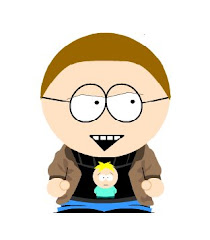 Property is on my mind these days and it seems the bubble is well and truly over.
Property is on my mind these days and it seems the bubble is well and truly over.I "borrowed" this image from a PropertyPin article about the phases of Property decline, it appears we are in the early days of phase 4. Don't believe me? See this post at IrishPropertyWatch.
The phases of a slowdown are listed below, the dates given are for the US market but simply adding 9 months should give the Irish equivalent; According to the article we are in phase three below.
• Phase One: Home prices stop rising and buyers strike while sellers still have expectations for continued escalating values. As a result, a dramatic slowdown in activity begins. This phase started—depending on the particular market—anywhereSo how much will property fall by? The diagram gives the answer but Aeshos has a post which spells it out;
from August 2005 to March 2006.
• Phase Two: Activity begins to slow even more dramatically as buyers realize home prices are overvalued. Sellers start to accept some price declines; however, they do not accept the degree of pricing adjustments needed in order to generate a sale. Conversely, new home builders begin to lower prices substantially and/or provide concessions in
order to stimulate and drive demand. As a result, they become the market pricing leaders and drive prices lower. This phase of the cycle began—depending on the market—in the summer of 2006.
• Phase Three: As foreclosures escalate, thereby becoming the new price leader in the market, home prices begin to plummet at an accelerating pace. Although this stimulates some levels of activity from those buyers who have been waiting on the sidelines. For new homes, builders can no longer offer the concessions because, for any new product
they build, not only are they losing money on the lot but also on the construction costs. This is a very dangerous scenario for the economy, leads to the failure of struggling home builders and dramatically increases the loss rates for banks and mortgage
investors. We believe this phase has started over the last few months.
• Phase Four: New construction finally grinds to a halt which enables inventory levels to narrow. The market does not deviate too far from this bottom until there is employment and wage growth which reinvigorates demand to the point that it exceeds supply, therefore, causing prices to rise again. It is worth noting that this final phase can last for a period of many years and, given the excessive inventory and continued payment shocks coming out of the IO and, soon, the payment options market, it will not be short-lived.
Because all asset hyperinflations revert to the mean, we can expect housing prices to decline roughly 38 percent from their peak as they return to something closer to the historical rate of monetary inflation. If the rate of decline stabilizes at between 6 and 7 percent each year, the correction has about six years to go before things stabilize, leaving the FIRE economy in need of $12 trillion.



